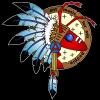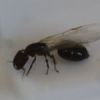- Formiculture.com
- Forums
- Gallery
- Members
- Member Map
- Chat

Feeding Honeybee pollen( Pollen Patties) Substitute to Weaver Ants?
Started By
laowai
, Sep 22 2015 5:22 AM
pollen substitute
22 replies to this topic
#21
 Offline
-
Posted July 13 2018 - 10:36 AM
Offline
-
Posted July 13 2018 - 10:36 AM
Wow, I just realised how old this thread is!
At least skocko brought the subject back up, I think I'll try feeding flowers on occasion though.
It brings to mind Royal Jelly though, meant to feed queen bees, I wonder if that's been tried?
I was actually going to comment on the article about the rainbow lorrikeets eating meat, my grandfather always used to wipe handfuls of mince meat on the wire of his aviaries and it was eaten by all his birds of which he had thousands. He had noticed that in the bush all sorts of birds ate the scraps of dried meat on sheep or roo carcasses so provided it to his many species of birds at home, he claimed that it reduces or eliminates the instances of birds butchering the babies of other pairs which often happens in captivity.
I digress, but has Royal Jelly been tried?
At least skocko brought the subject back up, I think I'll try feeding flowers on occasion though.
It brings to mind Royal Jelly though, meant to feed queen bees, I wonder if that's been tried?
I was actually going to comment on the article about the rainbow lorrikeets eating meat, my grandfather always used to wipe handfuls of mince meat on the wire of his aviaries and it was eaten by all his birds of which he had thousands. He had noticed that in the bush all sorts of birds ate the scraps of dried meat on sheep or roo carcasses so provided it to his many species of birds at home, he claimed that it reduces or eliminates the instances of birds butchering the babies of other pairs which often happens in captivity.
I digress, but has Royal Jelly been tried?
#22
 Offline
-
Posted July 13 2018 - 12:46 PM
Offline
-
Posted July 13 2018 - 12:46 PM
This seems like it would work better with the attines or Cephalotes.
From Antwiki:
The proventriculus of the Cephalotes is peculiar relative to other ants. The morphology of the structure suggests it serves as a powerful pump and filter. This does not appear to lead these ants to have a highly specialized diet as most species appear to be general scavengers. Foragers have been observed feeding on carrion, bird feces, extrafloral nectaries and even tending membracids. Pollen feeding has been observed in some species, and this is somewhat specialized for ants, but it is not evident that any species restricts its diet to this resource in any significant way. Evidence for pollen feeding in Cephalotes has accumulated, in part, via finding digested pollen grains seen in infrabucal pellets. It has been suggested that the morphology of the proventriculus is a specialization for processing pollen.
Only thing now is to find out what those species are. ![]()
Spoiler
#23
 Offline
-
Posted July 13 2018 - 2:14 PM
Offline
-
Posted July 13 2018 - 2:14 PM
Well, I should point out that I haven't tried pollen with weaver ants. And that is the title of the thread.
No, I tried it with the following: Camponotus barbaricus, Lasius niger, Crematogaster scutellaris, Messor barbarus and Messor capitatus.
Oh, and yeah, three year old thread resurrection
No, I tried it with the following: Camponotus barbaricus, Lasius niger, Crematogaster scutellaris, Messor barbarus and Messor capitatus.
Oh, and yeah, three year old thread resurrection
- DaveJay likes this
0 user(s) are reading this topic
0 members, 0 guests, 0 anonymous users
















